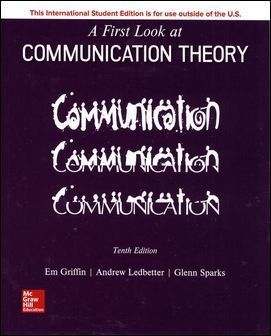書籍分類

A First Look at Communication Theory 10/e
作者:Em Griffin, Andrew Ledbetter, Glenn Sparks
原價:NT$ 1,050
ISBN:9781260091564
版次:10
年份:2019
出版商:McGraw-Hill
頁數/規格:560頁/平裝單色
參考網頁:A First Look at Communication Theory 10/e
版次:10
年份:2019
出版商:McGraw-Hill
頁數/規格:560頁/平裝單色
參考網頁:A First Look at Communication Theory 10/e
內容介紹 目錄 作者介紹
- Description
The tenth edition of A First Look at Communication Theory justifies again the program’s enduring popularity. Griffin, joined by colleagues Andrew Ledbetter and Glenn Sparks, encourages students who are encountering the field for the first time to tackle theories without fear. The authors introduce 32 diverse theories that are a mix of foundational and recent scholarship and, with the benefit of numerous examples and connections to pop culture, help students apply them to their own lives. This program ensures that students have a solid foundation with which to begin understanding the relationships between theories.
分類位置:
理工 > 社會科學 > 大眾傳播


